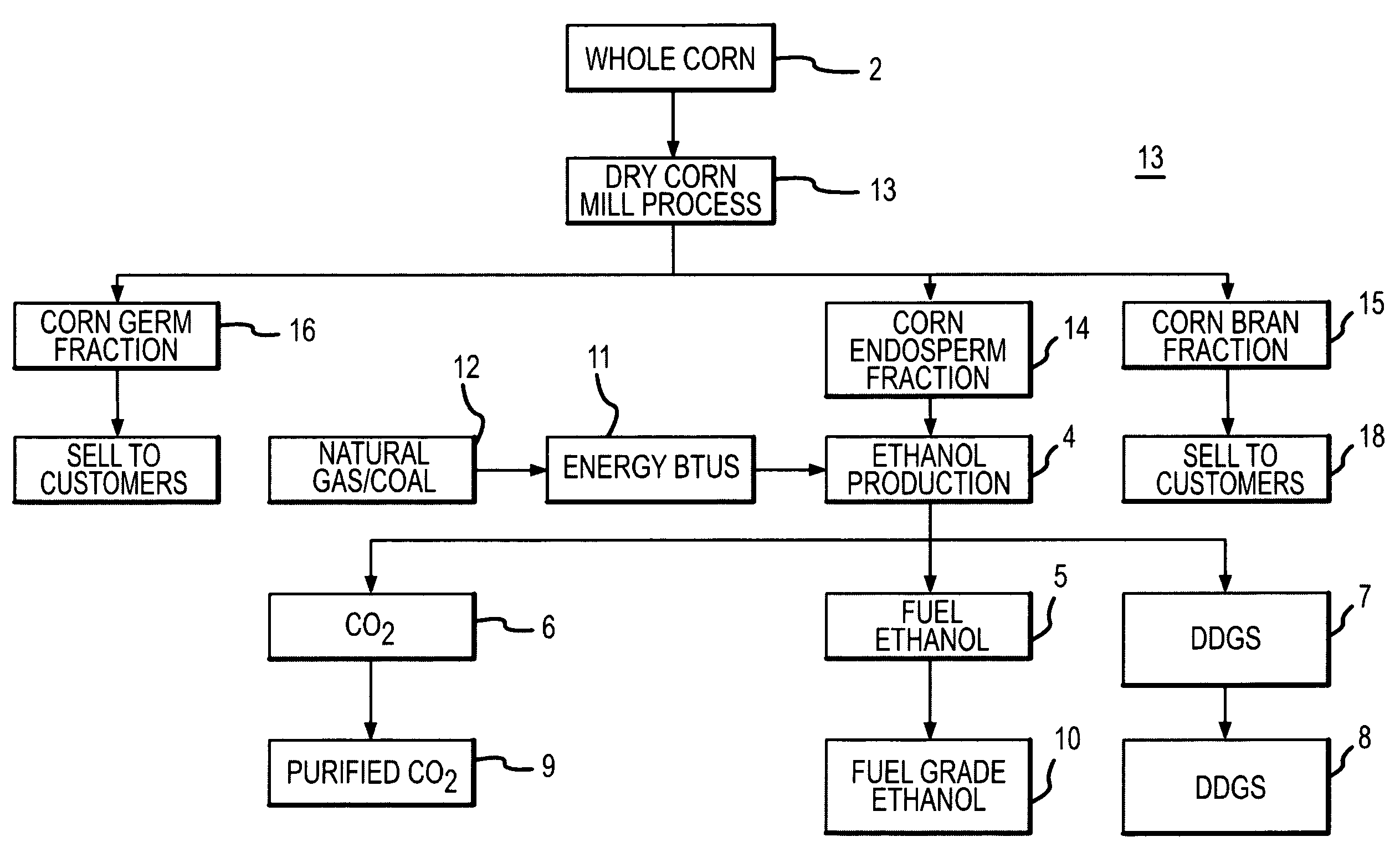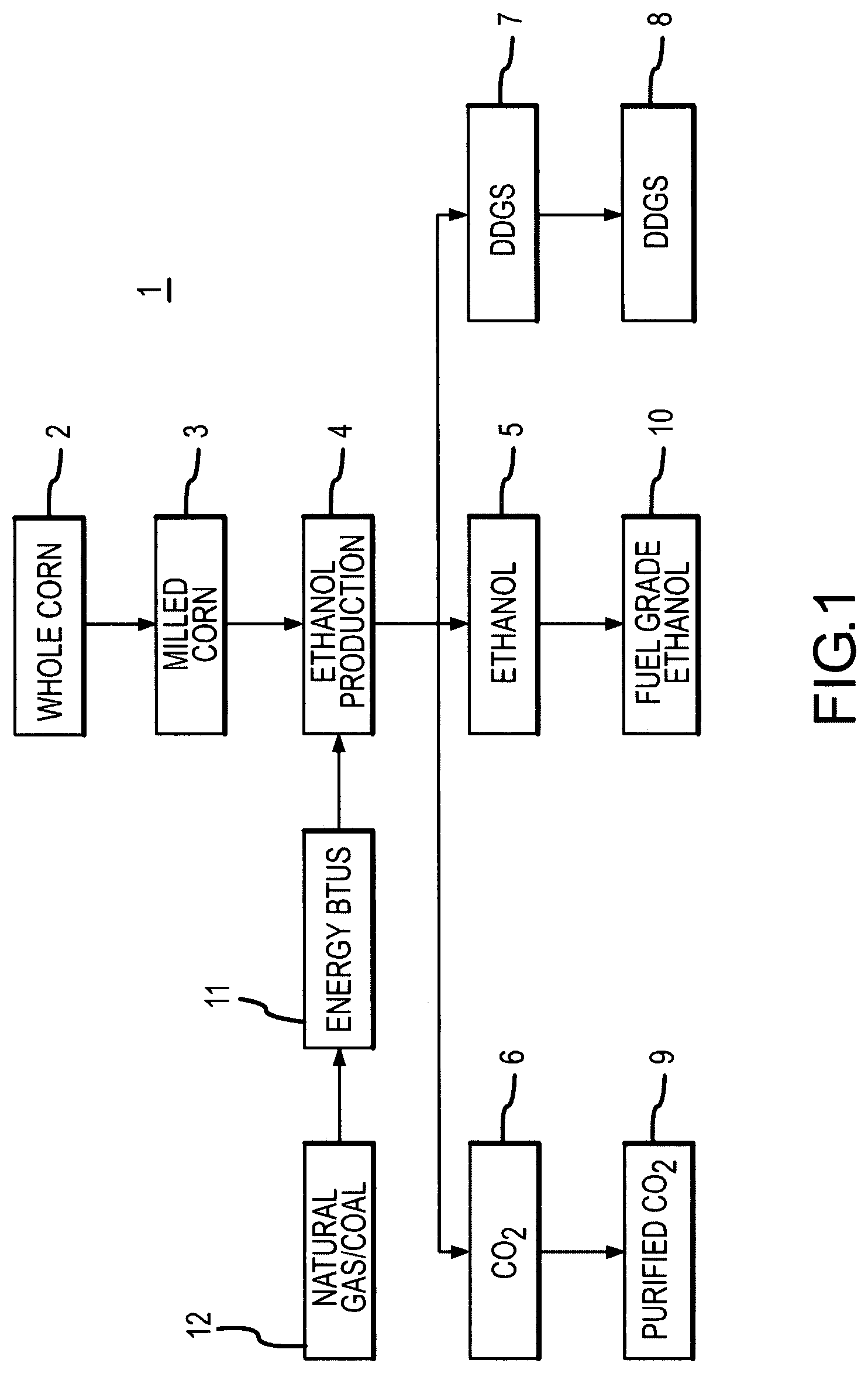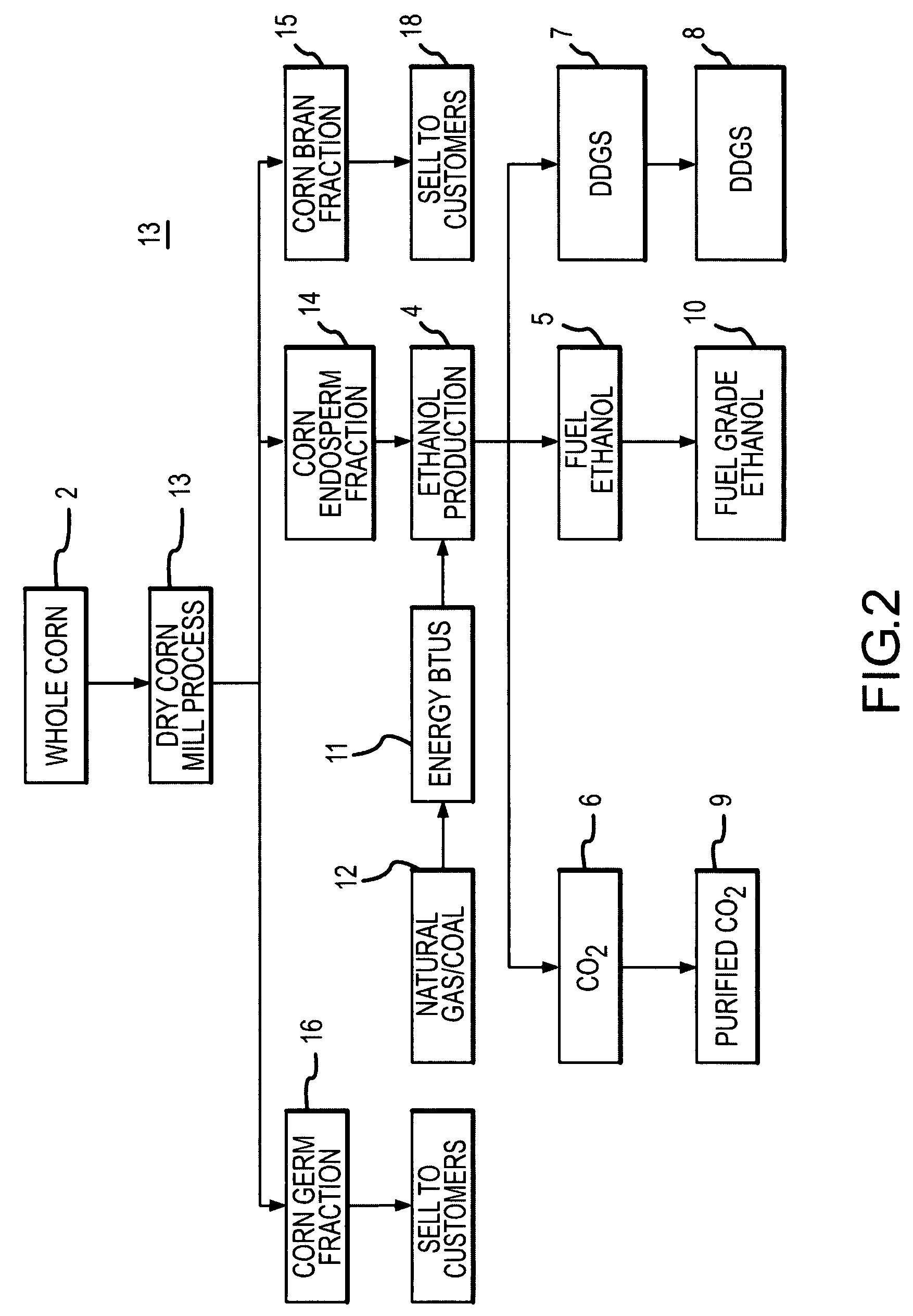Kernel fractionation system
a technology of kernel fractionation and kernel, which is applied in the field of kernel fractionation system, can solve the problems of unresolved problems with respect to conventional ethanol production, unacceptable ddg as feed for poultry and fish, and saturated market for conventional ddg (b>7/b>) products, etc., to achieve high protein dried fractionation, reduce thermal energy consumption, and increase ethanol production capacity
- Summary
- Abstract
- Description
- Claims
- Application Information
AI Technical Summary
Benefits of technology
Problems solved by technology
Method used
Image
Examples
Embodiment Construction
[0026]A dry corn fractionation system which operates to produce an endosperm fraction which can be concurrently of greater purity at greater yield than the corn milling or dry corn milling processes.
[0027]First referring primarily to FIG. 3, the dry corn fractionation system (17) whole corn (2) can be received and accepted by a corn cleaner (18). Whole corn (2) can move along a first sloping deck of the corn cleaner (18) having a plurality of holes. Whole corn (2) can pass through the holes onto an second sloping deck thereby removing material larger than a kernel of whole corn (2). The whole corn (2) then moves along the second sloping deck having holes of lesser size then a kernel of whole corn (2) thereby removing material smaller than a kernel of whole corn (2). The corn cleaner (18) can further include a cleaner aspirator (19). Whole corn (2) then passes through the cleaner aspirator (19) (as a non-limiting example a Series E six path unit available from Kice Industries, Inc., ...
PUM
 Login to View More
Login to View More Abstract
Description
Claims
Application Information
 Login to View More
Login to View More - R&D
- Intellectual Property
- Life Sciences
- Materials
- Tech Scout
- Unparalleled Data Quality
- Higher Quality Content
- 60% Fewer Hallucinations
Browse by: Latest US Patents, China's latest patents, Technical Efficacy Thesaurus, Application Domain, Technology Topic, Popular Technical Reports.
© 2025 PatSnap. All rights reserved.Legal|Privacy policy|Modern Slavery Act Transparency Statement|Sitemap|About US| Contact US: help@patsnap.com



